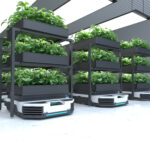One of today’s major concerns is energy consumption and, therefore, the impact that this consumption may have on sustainable social development. The breakthrough is in technology, which is in continuous product and is the one that facilitates the role of the specific economic agent to benefit from it.
One of the green energies whose development converges towards the mitigation of consumption and production problems is photovoltaics. At this point, I would like to highlight the development of this technology in terms of its installation in buildings, with its integration into the grid and the economic performance of the same being the issues that raise particular interest. For the technological development of this technology, the traditional design of photovoltaic installations, which considered the optimum orientation of the photovoltaic modules to yield the maximum annual energy production, must be worked on and further developed. Undoubtedly, this influences consumption patterns and hourly electricity prices, which vary from hour to hour, indicating that this traditional optimal design may not be the most profitable. Taking into account issues such as installations with or without canopies and facades that can offer a better quality of self-consumption of the energy produced can reflect a breakthrough in terms of the economic figures from which the prosumer can benefit. As I developed in a study with my colleagues who are experts in the specific technology, specific orientations and installations can and do result in better benefits for photovoltaic self-consumption, reducing the return on investment times, a significant variable when it comes to investing the part of the prosumer.
I leave the link to the specific study here.








